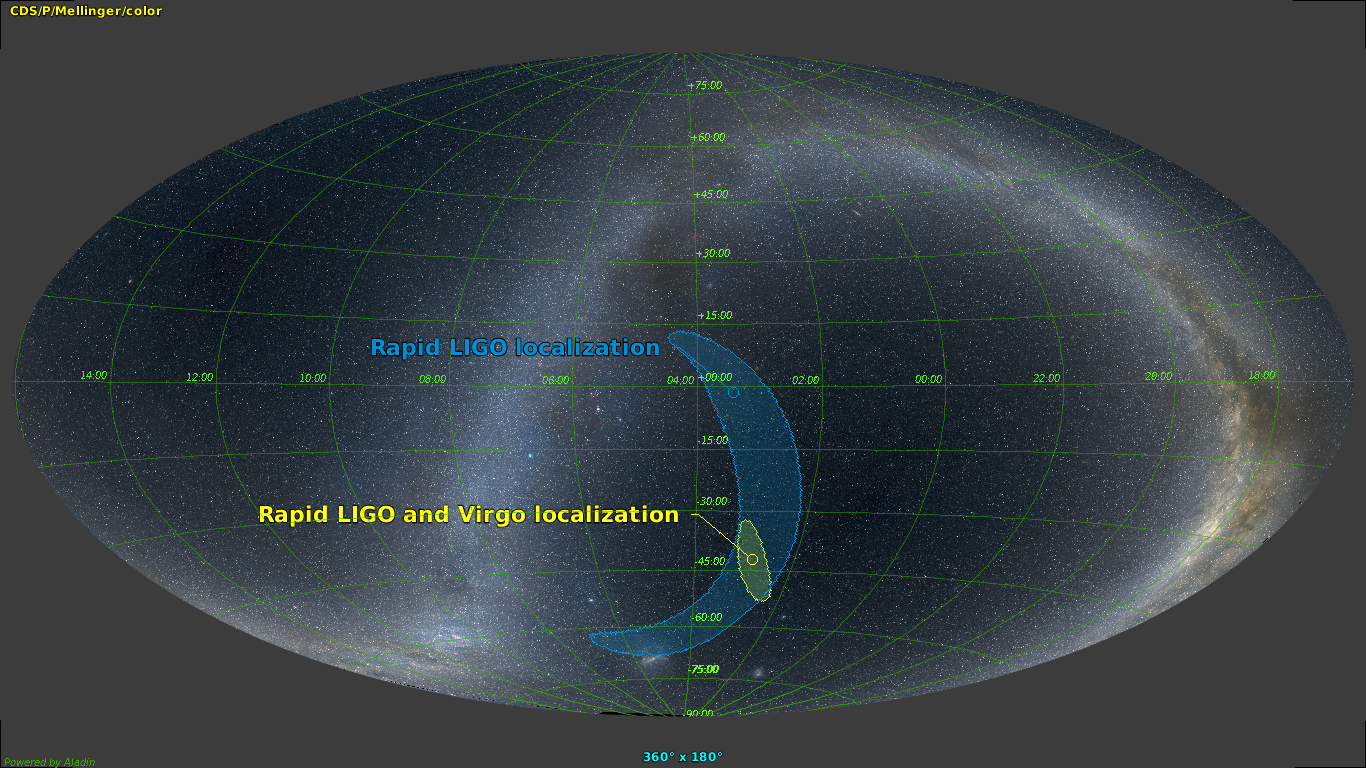The LIGO-Virgo global network of three interferometers opens a new era for gravitational wave science by jointly observing a black-hole merger

The Virgo collaboration and the LIGO Scientific Collaboration report the three-detector observation of gravitational waves. This result highlights the scientific potential of a global network of gravitational wave detectors, by delivering a better localization of the source and historically first time when the polarizations of gravitational waves have been assessed.The three-detector observation was made on August 14, 2017 at 10:30:43 UTC. The detected gravitational waves were emitted during the final moments of the merger of two black holes with masses about 31 and 25 times the mass of the Sun and located about 1.8 billion light-years away. The newly produced spinning black hole has about 53 times the mass of our Sun. This means that about 3 solar masses were converted into gravitational-wave energy during the coalescence.
The Virgo detector joined the Network Observing Run 2 (O2) on August 1, 2017 at 10:00 UTC, after the multi-year Advanced Virgo upgrade program, and months of intense commissioning to improve its sensitivity. The real-time detection was triggered with data from all three LIGO and Virgo instruments. Even though Virgo is at present less sensitive than LIGO, two independent search algorithms based on all the information available from the three detectors demonstrated the evidence of a significant signal in the Virgo data as well.
Overall, the Universe volume which is likely to contain the source shrinks by more than a factor 20 when moving from a two-detector network to a three-detector network. The sky region for GW170814 has a size of only 60 square degrees, more than 10 times better than for the two LIGO interferometers alone; in addition, the accuracy with which the source distance is measured benefits from the addition of Virgo. Being able to point to a smaller volume is important as many compact object mergers – for example when neutron stars are involved – are expected to produce broadband electromagnetic emission in addition to gravitational waves. The precision pointing information enabled 25 facilities to perform follow-up observations based on the LIGO-Virgo detection but no counterpart was identified – as expected for black holes.
Virgo doesn’t respond in the exactly same way to passing gravitational waves as the LIGO detectors because of its orientation on Earth, meaning that one can test another prediction of general relativity, which is concerned with polarizations of gravitational waves. Polarization describes how space-time is distorted in the three different spatial directions as a gravitational wave propagates. Initial tests based on the transient GW170814 event compare extreme cases: on the one hand, pure general relativity-allowed polarizations; on the other hand, pure polarizations forbidden by Einstein’s theory. The analysis of the data shows that Einstein’s prediction is strongly favored.
Details
- Scientific summary
- Fact sheet
- GW170814 detection webpage
- Article accepted for publication in the Physical Review Letters
- LIGO-Virgo collaboration press release
- Infographic